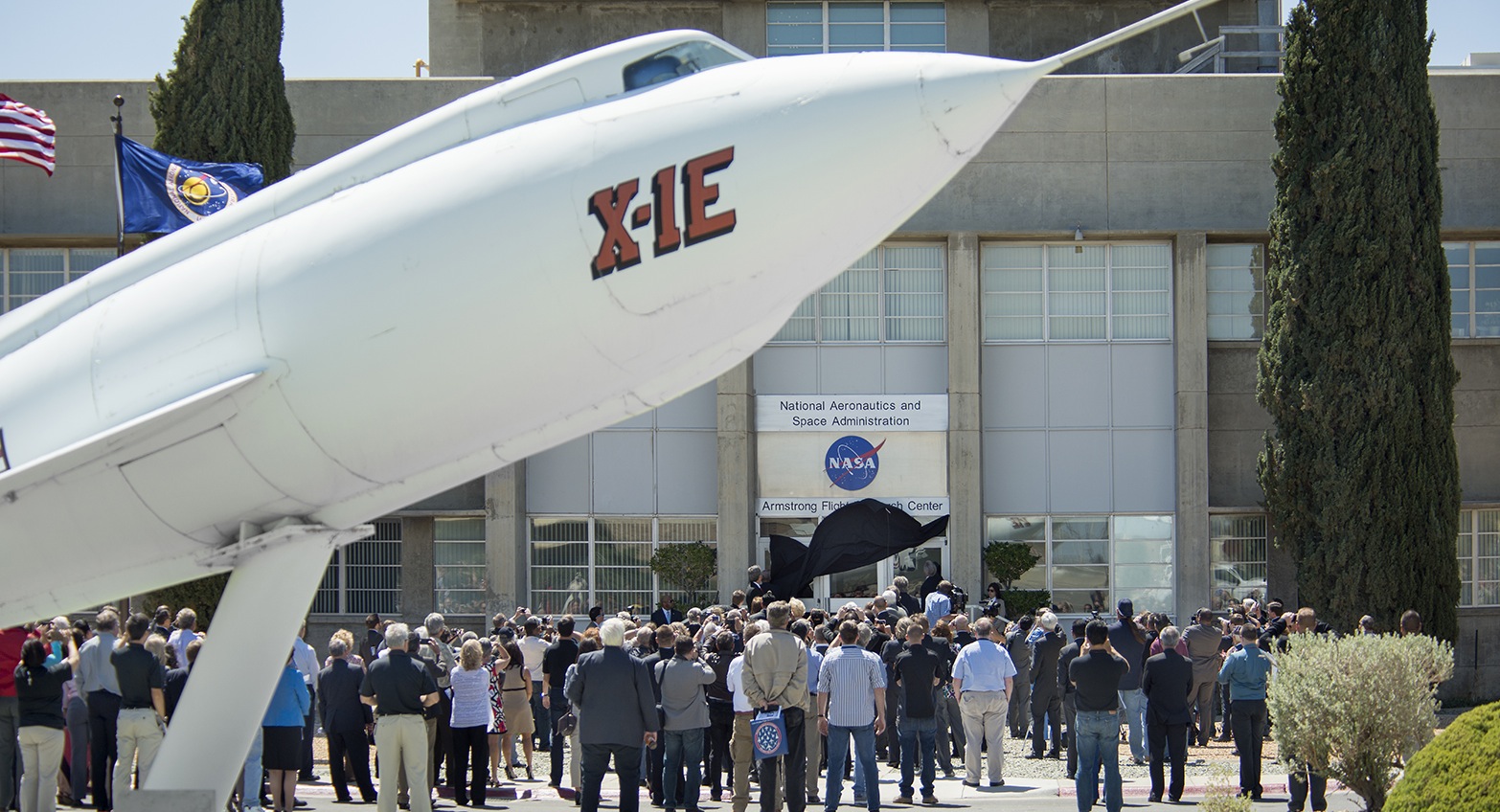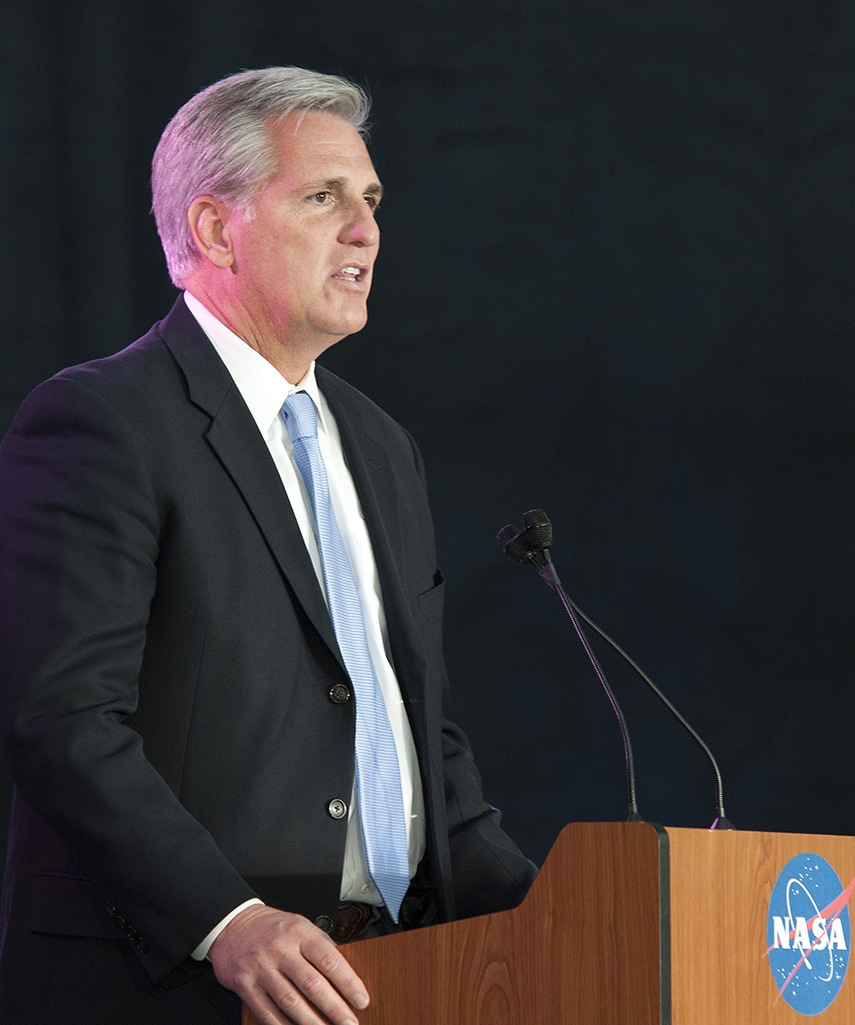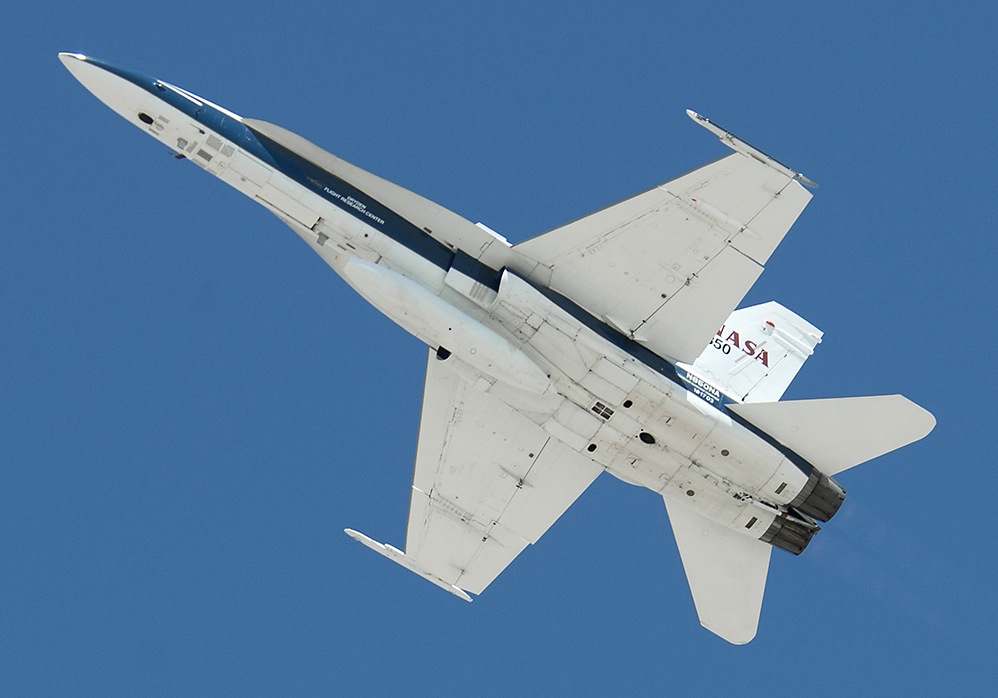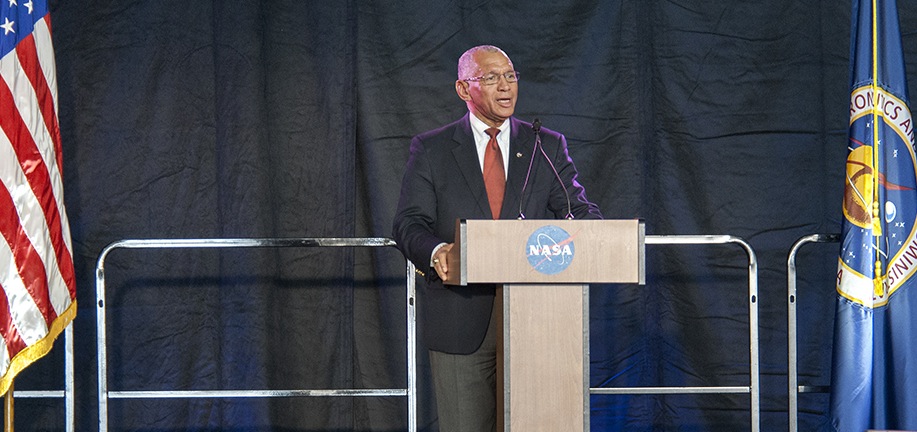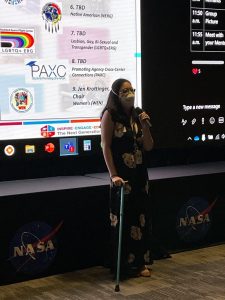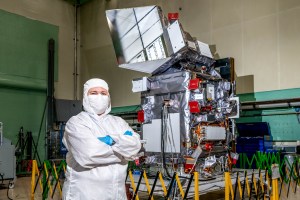Two aerospace legends and their families were honored at a formal dedication ceremony May 13, marking the rededication of NASA’s Armstrong Flight Research Center, formerly the Dryden Flight Research Center, at Edwards, Calif.
Legislation passed Congress in January to rename the center after the late Neil A. Armstrong, a former research test pilot at the center and the first man to step on the moon during the historic Apollo 11 mission in 1969. Armstrong flew research aircraft, including the rocket-powered X-15s, during his seven-year tenure at the center from 1955 through 1962.
The legislation also directed the naming of the center’s aeronautical test range for the late Hugh L. Dryden, the center’s namesake since 1976. A brilliant aeronautical research engineer for the National Bureau of Standards from the 1920s through the 1940s, Dryden served as director of the National Advisory Committee for Aeronautics from 1949 to 1958 and NASA’s first deputy administrator from 1958 until his death in 1965.
The renaming ceremony included a replica of the X-15 No. 3 rocket plane and the second Lunar Landing Research Vehicle (LLRV) adjacent to the stage. Armstrong piloted the actual X-15 No. 3 five times and was a key figure in the development of the LLRV and its successor, the Lunar Landing Training Vehicle that prepared astronauts for moon landings. Armstrong credited the LLTV training for his ability to manually land the Eagle lunar module on the moon on July 20, 1969.
Speakers included NASA Administrator Charles Bolden, Armstrong Center Director David McBride, State Senator Steve Knight of California, and Rep. Kevin McCarthy of California’s 23rd District. Armstrong’s sons, Rick and Mark, and Dryden’s grandson Eric also spoke briefly, and Armstrong’s granddaughter, Kali Armstrong, sang the national anthem before a hushed crowd in the center’s main hangar. The event was capped with a flyover of a NASA F/A-18 research aircraft and the unveiling of the sign bearing Armstrong’s name on the main administration building.
“This renaming is a fitting tribute that honors both their legacies,” Bolden said. “From Hugh Dryden’s experiences and work with airplanes when the field was in its infancy, to Neil Armstrong’s work as a test pilot and historic footsteps on the moon, these two helped pioneer a field that sustains us today in ways they could hardly have imagined.”
“Hugh Dryden was considered an aeronautical genius, who pushed the boundaries of high-speed flight,” he continued. “Beginning in 1931, Dryden’s expertise at the NASA Advisory Committee for Aeronautics and then at NASA established America’s leadership in space and organized the research that led to our first steps in space. His organizational leadership was at the root of Neil Armstrong’s most spectacular flight achievements, from the X-15 to his first footsteps on the moon.”
Although bearing a new name, NASA Armstrong will continue with its roles in NASA’s key missions, Bolden added.
“This wonderful center continues to blaze new trails in aeronautics and the technologies that support our path to Mars,” Bolden said. “Its Earth science work has immediate value for understanding our changing planet and it also supports our broader science portfolio and the human spaceflight program, which even now is reaching for new destinations.”
Rep. McCarthy, whose district includes the center, authored the legislation to rename the facility for Armstrong.
“To be here today took an Act of Congress,” said McCarthy. “With everything you hear about Washington, I’m proud to say no one voted against it. We are here to honor two men and their amazing accomplishments.”
McCarthy’s bill to redesignate the 68-year-old facility, NASA’s center of excellence for atmospheric flight research, in honor of Armstrong was passed by the House of Representatives in early 2013, by the Senate on Jan. 8, and was signed into law by President Obama on Jan. 16, 2014. The name change became official March 1.
“We are here today to honor the contributions of two men who made significant roles in placing America as a preeminent leader,” said McBride. “Their actions and contributions to aeronautics, aerospace and exploration will be forever remembered.”
“Hugh Dryden prepared America for the space age and remains one of the world’s pivotal figures in both aeronautics, space and spaceflight. Neil Armstrong was the first man to stand on the moon –- he was also an engineer and a research test pilot at this center for the NACA and NASA.”
McBride noted that the mission, core values and vision of the center remain unchanged.
“Our role throughout our history is in the integration of complex flight systems and their safe test and flight operations,” he explained. “Though we have diversified from our traditional aeronautics base, the work we continue to do in science and space exploration utilizes our ability to understand the problem and its connection to flight, to understand the vehicle, and to safely clear the flight envelope.”
McBride also called for a moment of silence to honor the recent passing of another of Dryden’s heroes – former Dryden research pilot Bill Dana, who passed away on May 6.
“He was one of our friends, our inspirations and a friend and colleague of Neil Armstrong. Bill’s presence is terribly missed, but his memory and legacy continue on with us.”
Knight, the son of legendary test pilot William J. “Pete” Knight, who in the X-15 flew the fastest flight of the 199-flight program at Mach 6.7, looked back at the center’s history.
“You can’t drive across the lakebed without getting a smile on your face, or a tear in your eye,” said Knight. “We have a lot of history out here like the Armstrong family and the Walker family and the McKay family and the Dana family. This is where history was and is made.”
“It was an absolute honor to share the Dryden name with this amazing test facility and all of its employees here at NASA for the past 38 years,” said Eric Dryden, Hugh Dryden’s grandson. “I knew my grandfather for five months before he passed away, but I know he would be extremely proud and honored to pass the torch to an amazing engineer, test pilot, astronaut, and true aerospace pioneer Neil Armstrong,” he said.
Mark Armstrong, Neil Armstrong’s younger son, said Hugh and Neil are inextricably linked by a center where they “make real that which we have imagined.”
Neil Armstrong’s older son, Rick, also represented the family on stage.
“He considered himself an engineer first,” added Rick Armstrong, Neil Armstrong’s older son. “He said science is about what is and engineering is about what can be. He said his father would be proud to have his name on the NASA facility to continue inspiring young people in science, technology, engineering, and mathematics so they can achieve great things like those accomplished at the center.
The center’s mission, vision, and goals are aligned to focus on pushing through technological barriers to new frontiers. It is exactly what NASA asks and what the two great men honored at the ceremony would work to achieve.
View more photos of the renaming ceremony on the NASA Armstrong Facebook page: http://on.fb.me/1jI5yKL



























